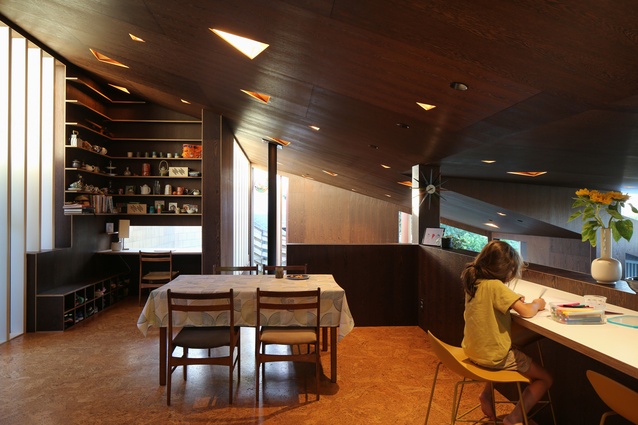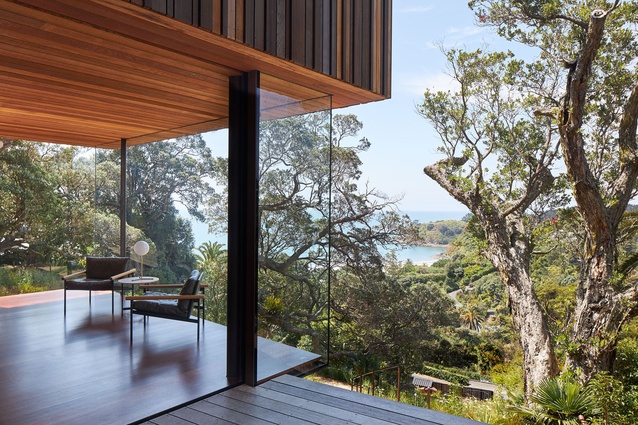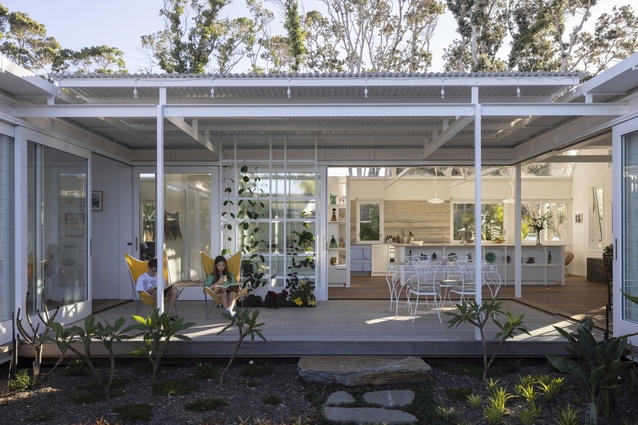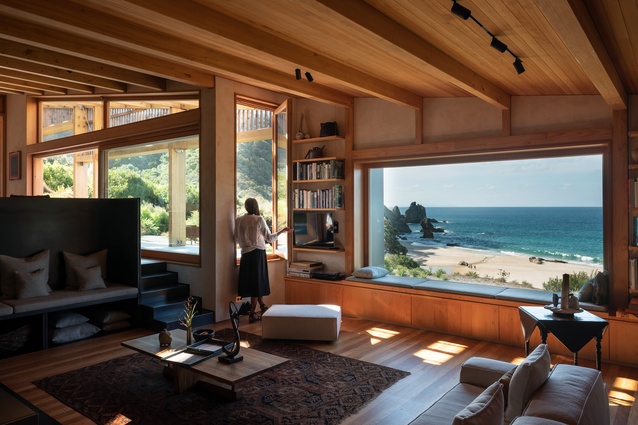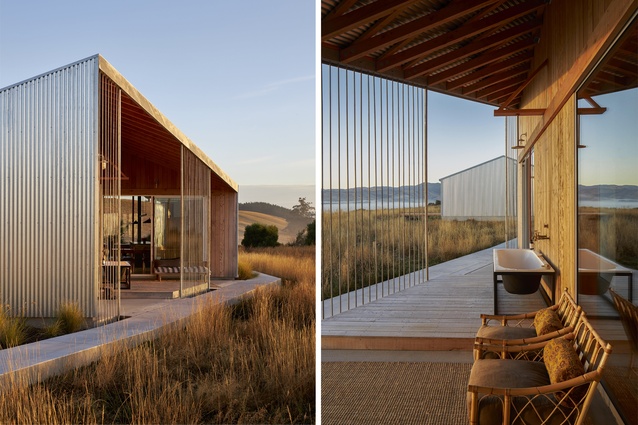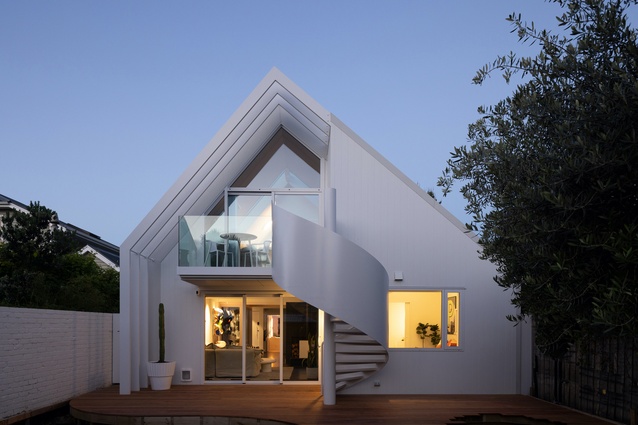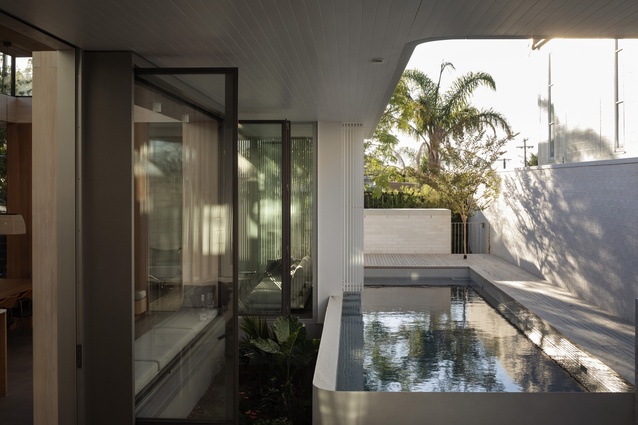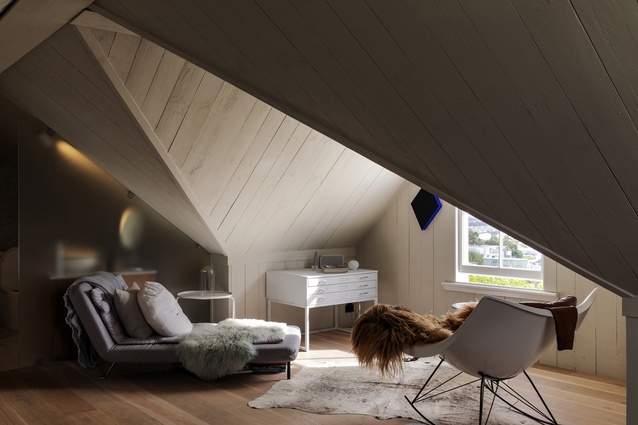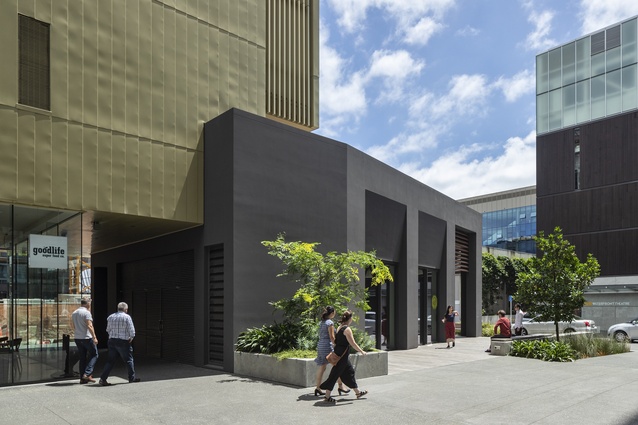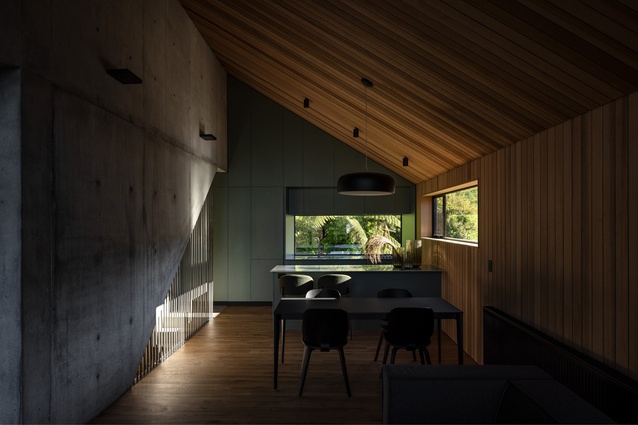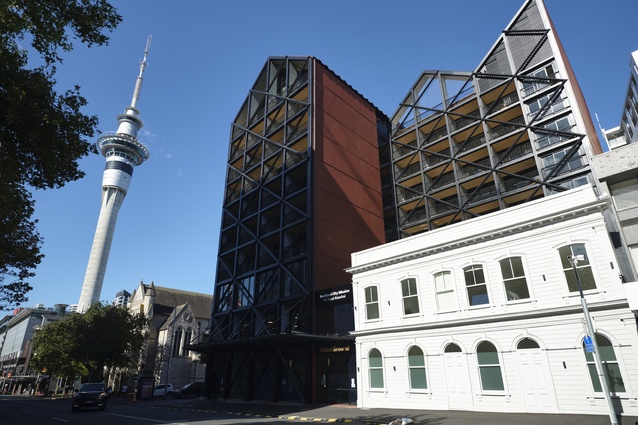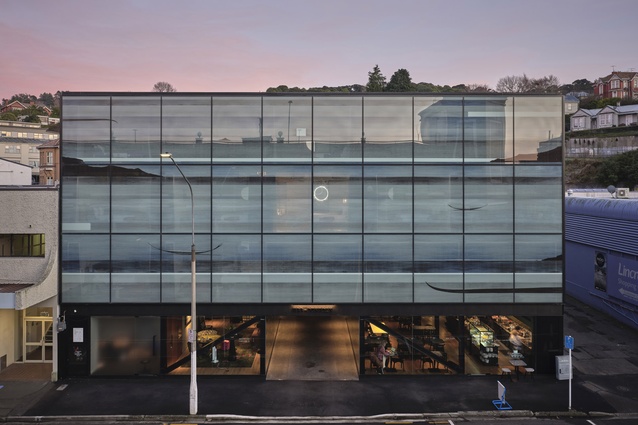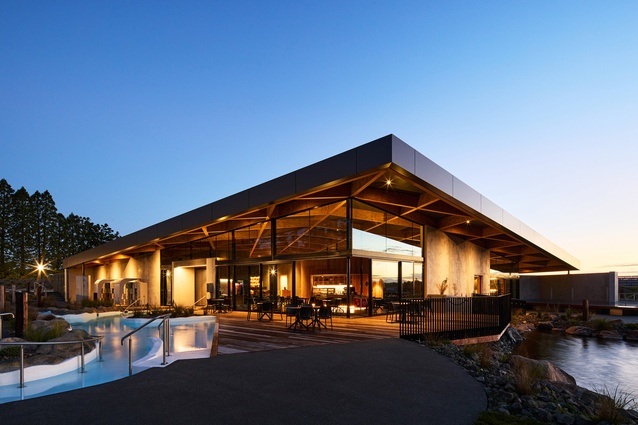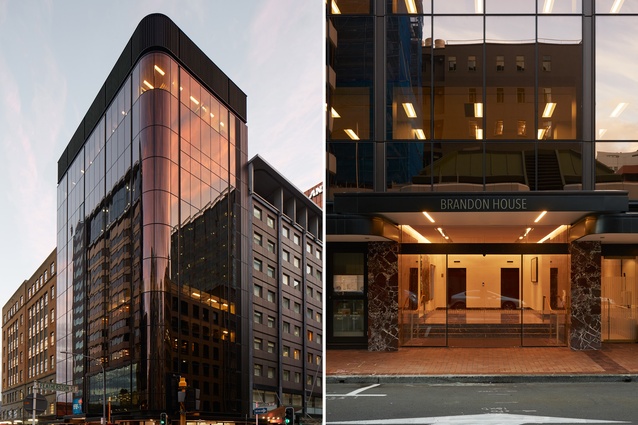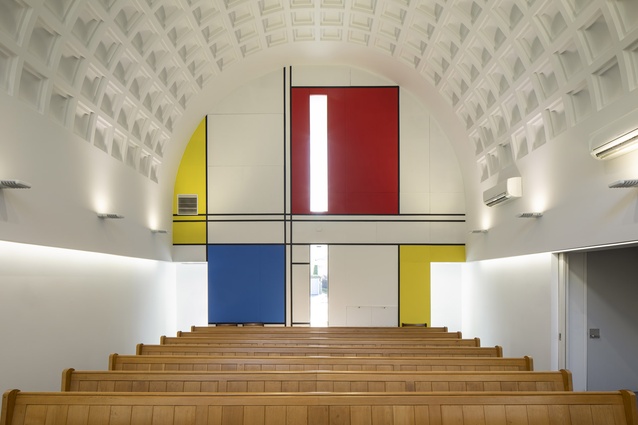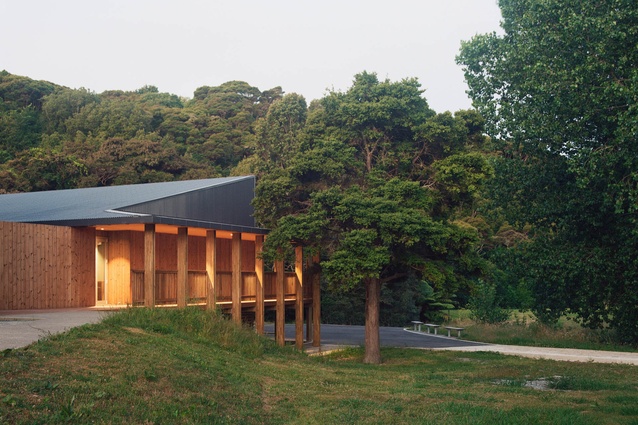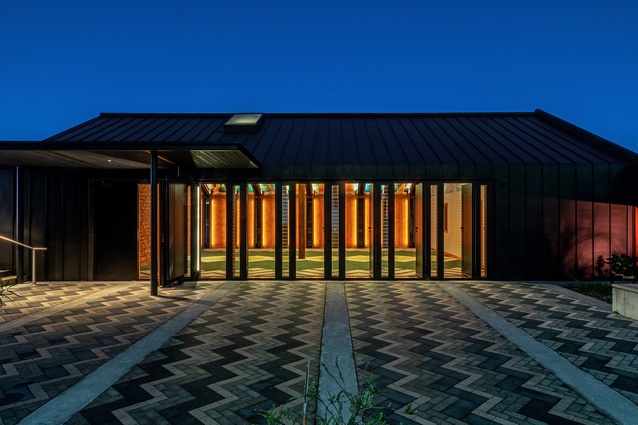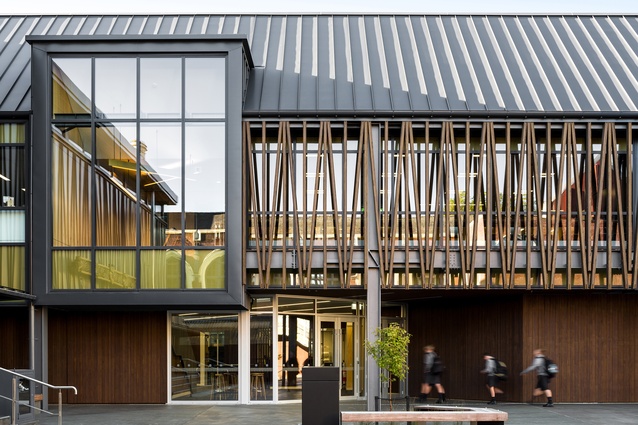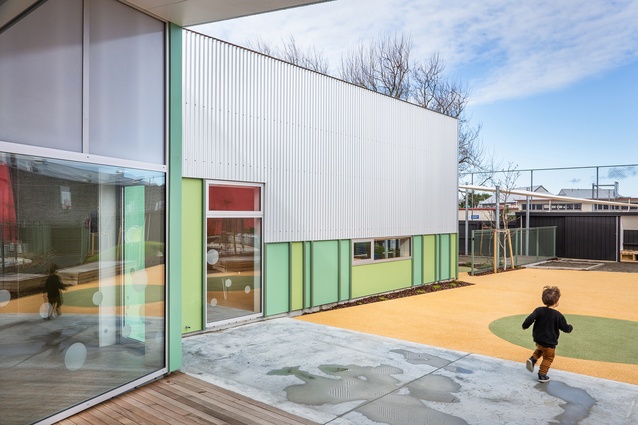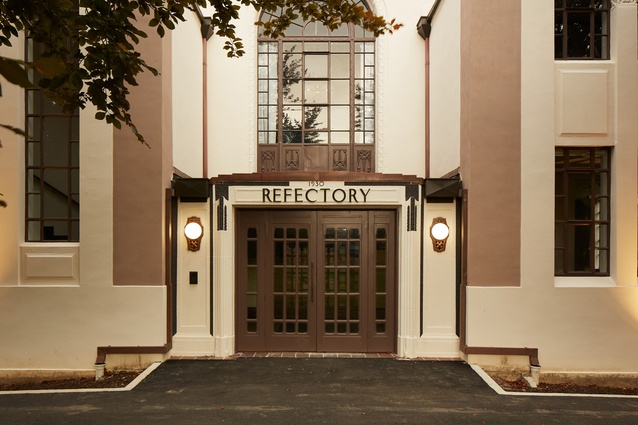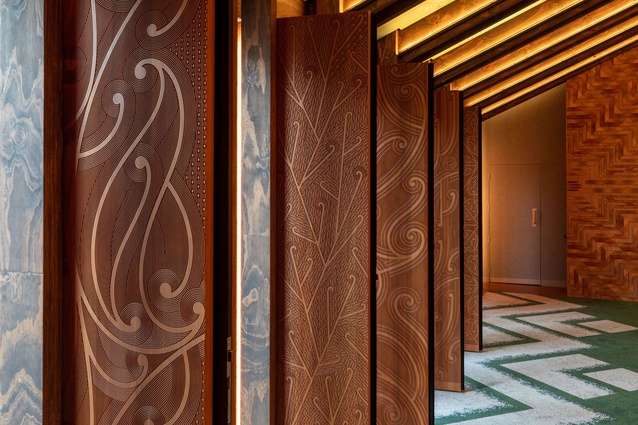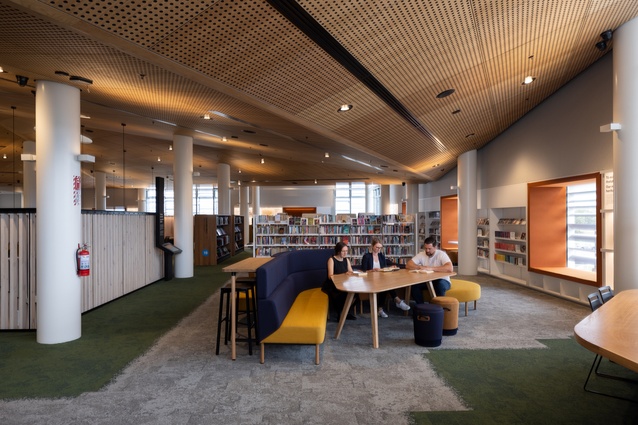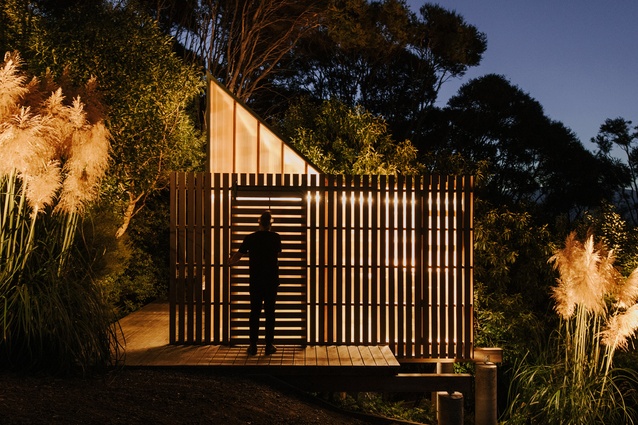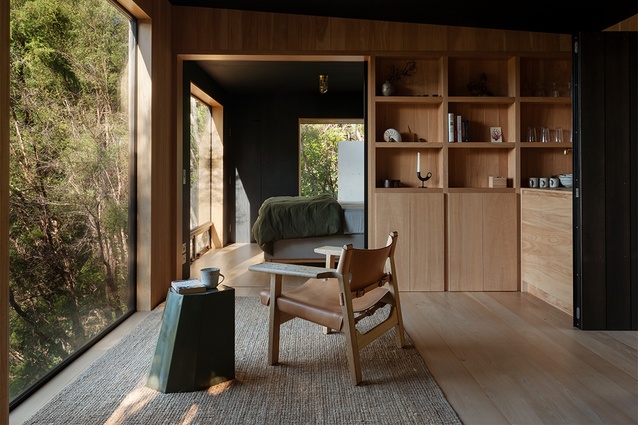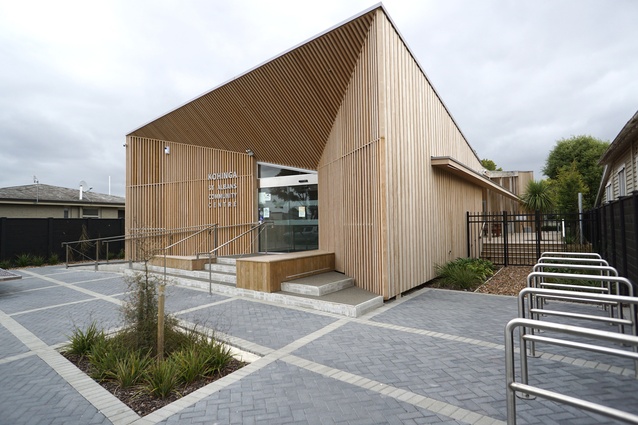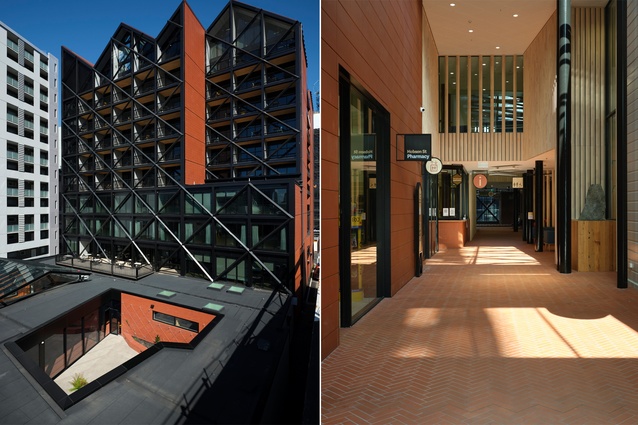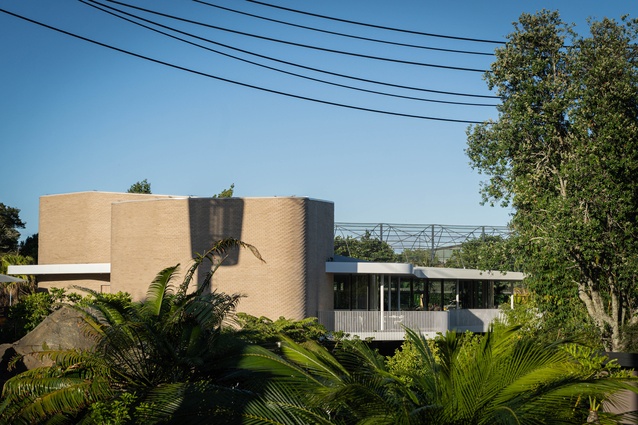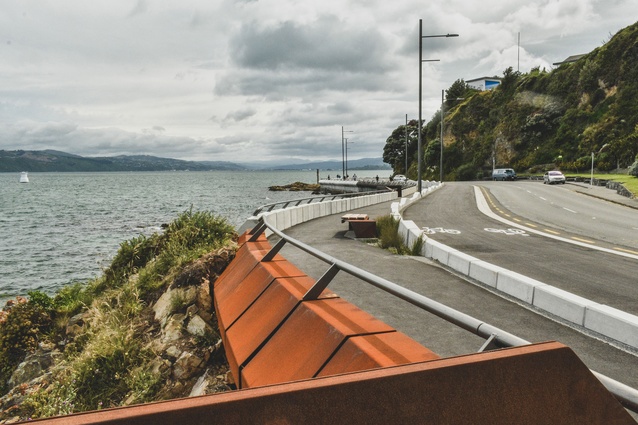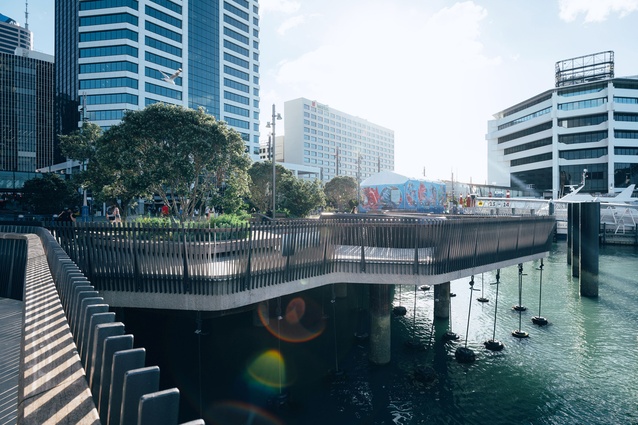Winners announced: 2022 New Zealand Architecture Awards
Te Kāhui Whaihanga New Zealand Institute of Architects (NZIA) has announced the winners of this year's New Zealand Architecture Awards.
This year’s New Zealand Architecture Awards jury was led by Nelson-based architect Andrew Irving of Irving Smith Architects and included fellow architects Ana O’Connell of Lovell & O’Connell Architects, Craig Moller of Moller Architects and Mel Bright of Studio Bright, Melbourne. The jury began its 11-day tour of Aotearoa on Monday 29 August and visited 47 projects across 12 categories.
Andrew Irving convenor of the jury said of the projects shortlisted this year: “We saw a selection of high-quality work produced by leading practitioners; most encouraging were innovative projects adapting to the social, cultural and climate issues that are shaping architecture in Aotearoa today.”
Irving continued: “We were particularly impressed with the four winning projects in the Education category. This is an area of architecture where the quality of a project can positively impact many people, from our tamariki and rangatahi, and their whānau, to the wider community. Following an absence from the 2021 awards, it was wonderful to see the Ted McCoy Award for Education so hotly contested.
As always, the housing categories were standouts, with all entries displaying restraint, sophistication and exacting execution. The jury was impressed by the quality and calibre of the short-listed projects.”
Watch the video of 2022’s winners and find details of all winning projects below:
HOUSING AWARDS:
Waterhouse Family Home by Bull O’Sullivan Architecture, Kemureti Cambridge
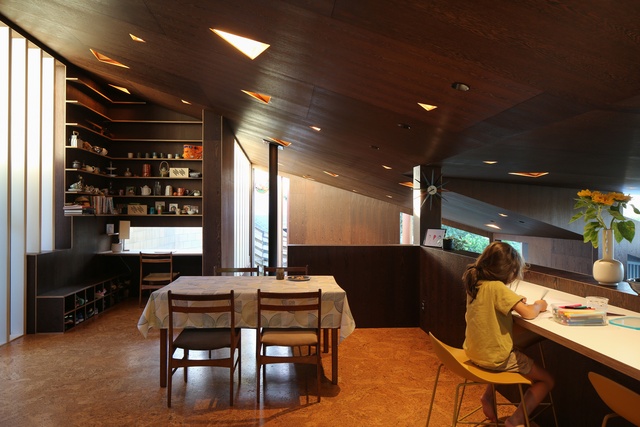
Judges said: “This nurturing family home delivers on the opportunities of a difficult site. The organisational strategy accepts the steep topography, using the central stair as a wayfinding device and to order a complex layered geometry. Spatially dynamic areas interconnect around the stair below the dramatic sloping roof. The house opens to a series of connected outdoor areas, embracing the site and interconnecting, where possible, with its immediate neighbours. Ventilation and solar gain are carefully considered and controlled by bespoke openings and shutters. The house is materially rich and joyfully detailed, benefitting from the craft and attention given to elements designed, fabricated and installed by the owners.”
Mawhitipana House by MacKay Curtis, Te Motu-arai-roa Waiheke Island
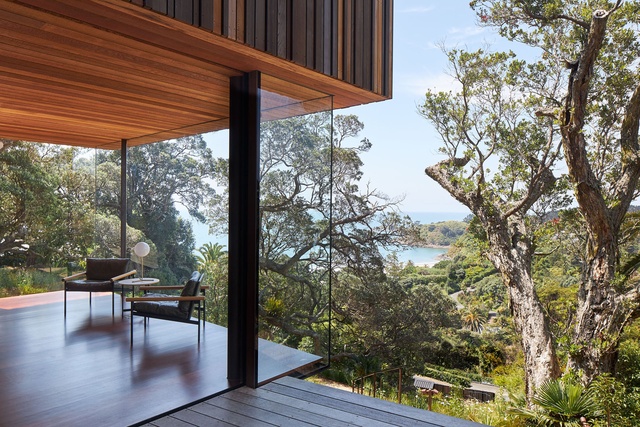
Judges said: “Hovering within a grove of established pōhutukawa at the top of a steep, narrow site, this retreat is a project of enjoyable contrast. Restrained yet sophisticated, modest yet bold, simple yet complex. The two axis parti of a deck for living, intersected by a floating timber box for sleeping, provides delightful spatial contrast. The clarity and elegance of the floating timber box is achieved through care in detailing, the refined steel structure, and in deftly hiding the services. In the living level, the feeling of being in nature is enhanced by timber linings, the high level of transparency and a lack of structure. The volume seamlessly stretches out to the decks and connects with the landscape.”
Crinkle Cut House by Pac Studio and Steven Lloyd Architecture, Tāmaki Makaurau Auckland
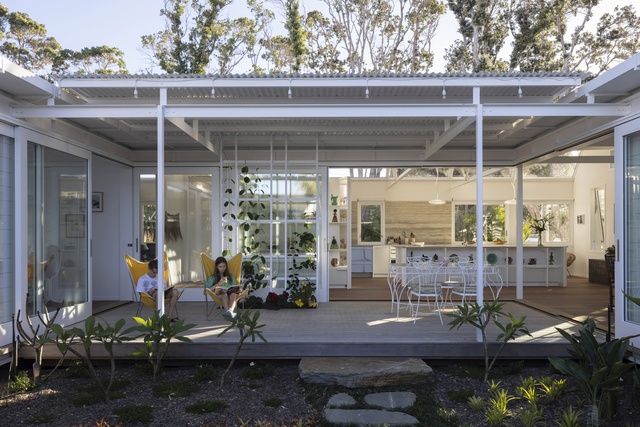
Judges said: “This relaxed and enchanting house accommodates a retired couple, plus their extended family for holidays. The dwelling fits into its suburban context, yet differentiates itself from its neighbours. Living is arranged around a series of courtyards to provide natural light and outlook within the tight site. Privacy and proximity to the street are mediated with a series of louvred decks, which lend a holiday feel to the environments created. Roof forms connect with the sky and pōhutukawa without compromising privacy. Landscaping provides a house that mingles the inside with the outside.”
Waimataruru by Pac Studio and Kristina Pickford Design in association, Te Tara-O-Te-Ika-A-Māui Coromandel
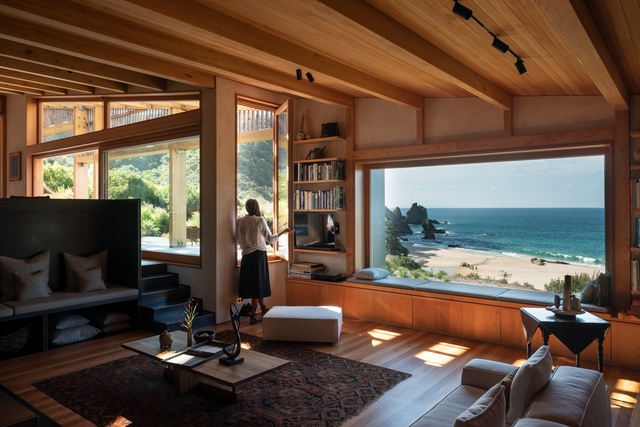
Judges said: “This crafted home fits peacefully within its stunning coastal landscape, a singular form following the land’s contour. A considered entry sequence turns away from the coast, connecting with the site’s regenerating bush. The dramatic view is delivered from within a beautifully crafted interior. A stepped strategy follows the landform, defining internal spaces that interconnect seamlessly within an open volume. Coastal views are restrained, scaled and composed through timber joinery. Thermal performance and carbon calculation inform the design of a high-performing building envelope. The line between architecture and interior design is delightfully blurred in a series of beautifully crafted surfaces and rigorously assembled timber elements.”
Kahutara House by Patchwork Architecture, Wairarapa
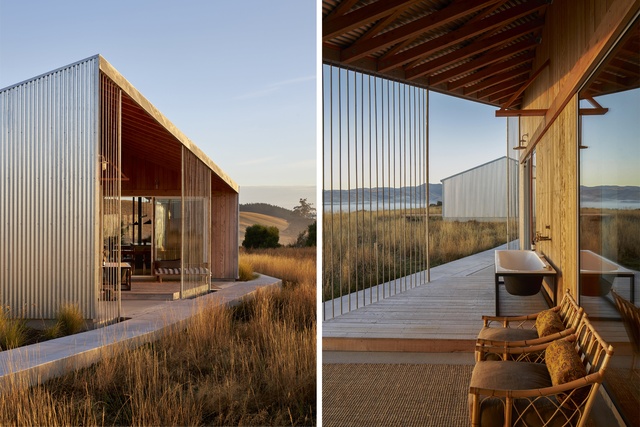
Judges said: “At first glance, Kahutara is an elegant shed in a paddock. As you draw closer, conceptual clarity and exacting execution are revealed. A skilful play on shed and gabled-roof geometry creates a restrained, yet dynamic form. Under the roof to the east and west of the S-shaped plan are two generous verandah rooms. These textural intermediary spaces connect the interior with the broader landscape and enable sheltered, elemental experiences of the domestic rituals of dining, living and bathing. The internal sliding door, beautifully engraved with the poutama, embodies the notion of turangawaewae specific to the owners. This home is a place of connection – to land, whānau and whakapapa.”
HOUSING – ALTERATIONS AND ADDITIONS AWARDS:
Beach Barn by C Nott Architects, Ōtautahi Christchurch
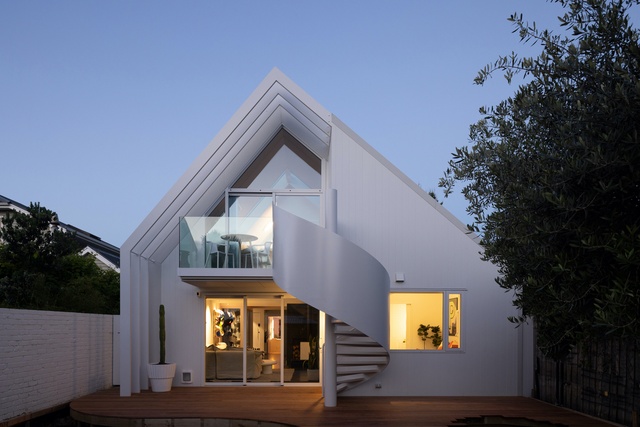
Judges said: “Beach Barn is a dramatic transformation undertaken within the footprint of an existing dark and leaky 1990s house. Stripped back to a pure gabled form, circulation and planning maximise the site’s potential. The result is a light-filled home that settles the conundrum of privacy versus views, and demonstrates successful collaboration between architect and interior-designer client. Care and attention to detail, unexpected touches and delightful use of colour and texture are evident throughout. Beach Barn showcases the potential of collaboration to create beautiful and adventurous residential architecture.”
Town House by Guy Tarrant Architects, Tāmaki Makaurau Auckland
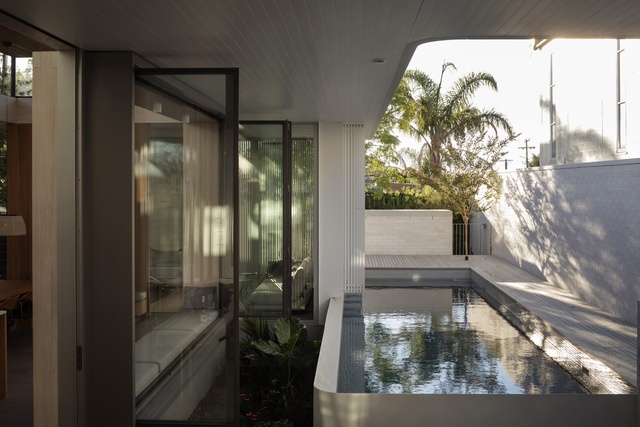
Judges said: “Through clever handling of light and aspect, this alteration creates an inner-city sanctuary. The existing pair of townhouses have been carefully restored and reconfigured, with history not forgotten through the retention of sections of the existing brick party wall. The scrupulously crafted single-storey addition is sympathetically scaled and skillfully handles the relationship to the north. A northern courtyard with an elegant, glistening pool punctures what would have been the darkest part of the plan. Through the integration of a courtyard and clerestory windows, natural light washes down and reflects off the pool to animate the new living spaces and terraces.”
Under Ivy by Jack McKinney Architects, Tāmaki Makaurau Auckland
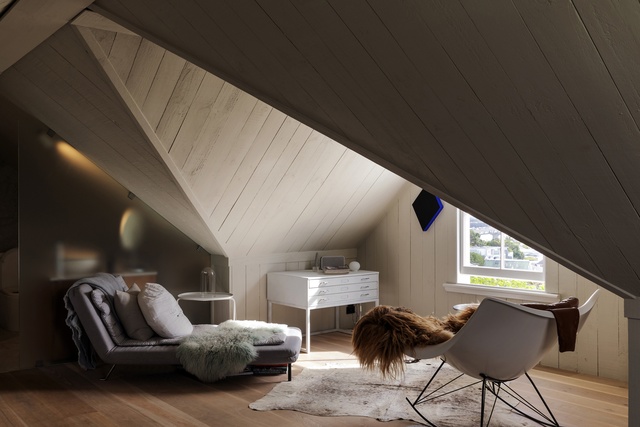
Judges said: “Under Ivy is the beautiful resolution of a sophisticated design strategy. Roof gardens above the living addition raise the garden plane to connect with the first floor of the 1890s villa, and its planting throws dappled shadows through the skylight slots to the walls below. The considered approach to the heritage component of this project is outstanding, demonstrated in the care taken in restoration and the restrained, contextual material palette. Built form and nature are overlaid and connected to create a sensitively scaled, private, lush and light living addition. Consistency of design intent, refined detailing and collaboration between architect, structural engineer and landscape designer is commended.”
HOUSING - MULTI UNIT AWARDS:
132 Halsey by Athfield Architects, Tāmaki Makaurau Auckland
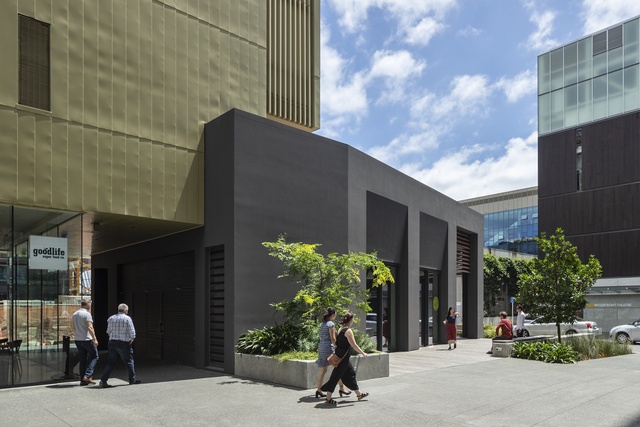
Judges said: “The key to the success of this multi-unit project is the integration of a public space in the urban realm at the ground level. Apartments are arranged around a courtyard that interfaces with the street network on three sides of the development via a series of openings and walkways. Commercial tenancies connect with this space to provide an activated and porous public realm. A range of apartment types are efficiently grouped around common cores to provide dual aspects and cross ventilation, reducing the need for mechanical ventilation and enhancing the urban living experience. The roof scape is imaginatively treated in form, colour and texture to positively contribute to the skyline. ”
Party Wall by Patchwork Architecture, Te Whanganui-a-Tara Wellington
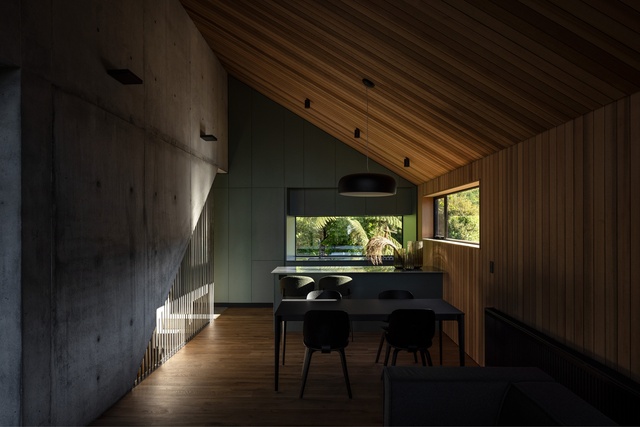
Judges said: “Anchored to a steep hillside by a robust central wall, this elegant townhouse development shelters beneath a simple metal clad form with expansive glazing to the north. Deft planning negotiates the complexity of a site with no parking. A pair of inviting steel stairs access the upper-level balcony of each adjoining unit, immediately revealing the view, and minimising circulation space. Two similar homes are vertically offset to suit the topography of this tight Kelburn hillside. Extensive glazing admits light deep within the interior. The substantial insitu concrete circulation core addresses environmental, structural, acoustic and fire requirements. An elegantly detailed pod separates lower private spaces and provides services. ”
Auckland City Mission - HomeGround by Stevens Lawson Architects, , Tāmaki Makaurau Auckland
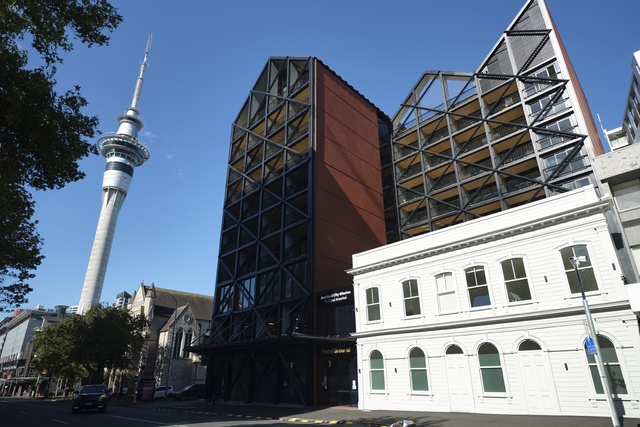
Judges said: “HomeGround provides much-needed housing for those most in need, showing how architects can contribute more broadly to this typology. While the program caters for the homeless, the building provides lessons in applying this architectural solution to a multi-unit residential environment. The arrangement of the living units reads as a series of clusters around a common core, breaking down the overall internal mass from a user experience, as well as externally in the urban realm. Wraparound services are provided on the ground floor, where commercial tenancies connect with the public through community spaces. The top floor is dedicated to common areas, decks and gardens to provide joy and outlook to the city.”
COMMERCIAL ARCHITECTURE AWARDS:
EBB-DUNEDIN by Gary Todd Architecture, Ōtepoti Dunedin
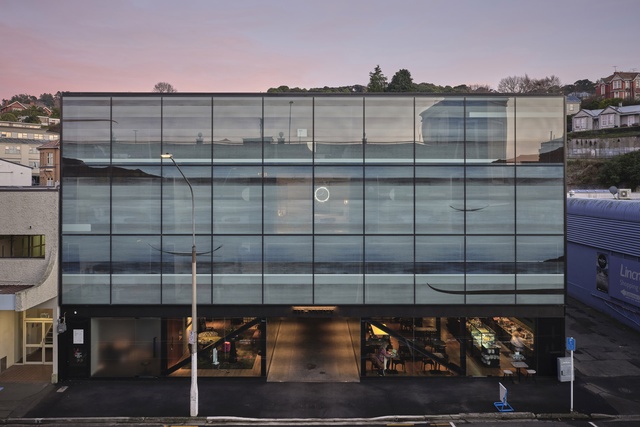
Judges said: “Ebb inverts the conventional relationship of a hotel atrium and lobby, allowing transparency through a well-scaled and active central void. A glazed external pathway at the atrium edge activates internal circulation. Casual luxury is announced at reception and carried through public spaces by refined metal detailing, landscaping and art within the gallery-style, multilevel space. Considered repeatability of conventional building components efficiently affords a variety of room configurations. The large-scale artwork by Simon Kaan is integral to the façade. This curtain wall is a creative privacy screen animated by occupation at night and serves as a public installation that embeds a cultural and historical view of Ōtepoti.”
Ōpuke Thermal Pools and Spa by Sheppard & Rout Architects, Piwakawaka Methven
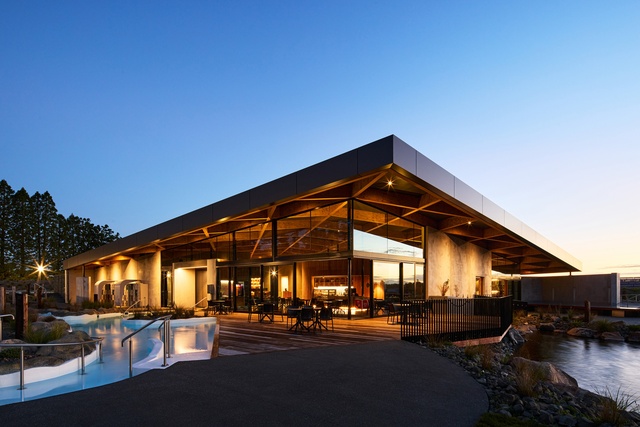
Judges said: “Architectural form and material selection reflect the approach to this site at the foothills of the Southern Alps. A singular folded timber roof, floating above expressed gabion elements, compresses the experience of entry, which opens as a sheltered inner environment. Sustainability principles are apparent in ordered banks of solar water heating, while LVL components are assembled with visible care and craft. The roof grid orders a diverse brief of requirements: solid forms enclose the materially rich and carefully resolved changing rooms and treatment spaces; controlled circulation separates adult, family and spa facilities. The glazed building edge is enhanced by a simple material palette and minimal vertical structure. The building opens to the alps through well-captured views and integrated landscaping.”
Brandon House by Studio Pacific Architecture, Te Whanganui-a-Tara Wellington
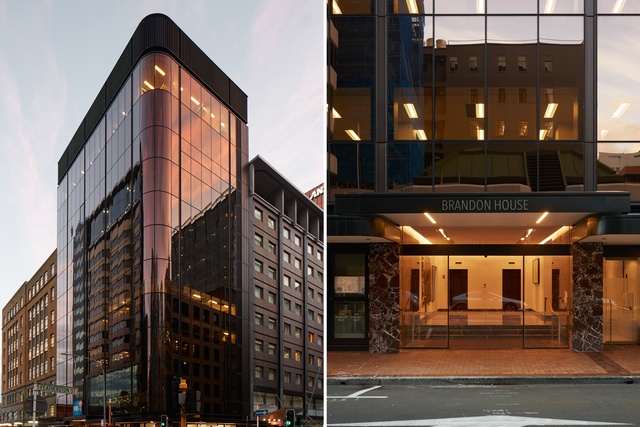
Judges said: “This refurbishment preserves and repurposes an ageing structure on a prominent city corner. Detailed research thoroughly considered the building’s lifecycle costs, establishing that reuse and spatial optimisation was economically and environmentally feasible. Appropriate use of timber allows the retained concrete structure to be extended vertically by three floors. A taut skin of bronze glazing stretches across the elegant tower, with a considered streetscape to the base, and crisp metal-clad capital at a high level. The intelligently reorganised commercial floor plan captures precious harbour views at upper levels. The curved corner softens the façade, reflecting adjacent buildings and adding a dramatic internal experience of the street below.”
ENDURING ARCHITECTURE AWARD:
First Church of Christ Scientist (1991) by Warren and Mahoney Architects, Ōtautahi Christchurch
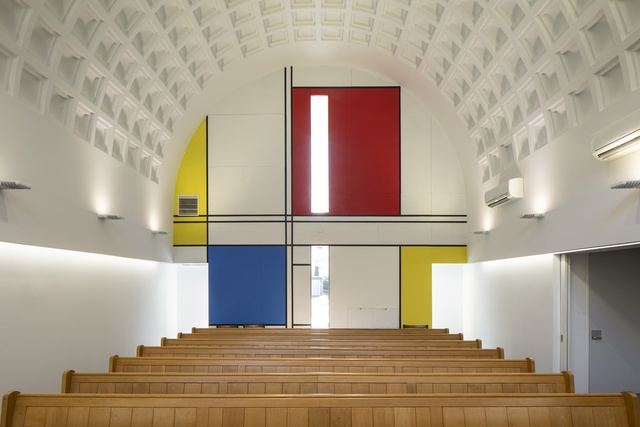
Judges said: “An exemplar of enduring post-modern New Zealand architecture, First Church of Christ Scientist is humble in scale with a whimsical yet serene sensibility. The two rectangular forms and wide courtyard are sensitively sited between the river, established trees and a busy road. Post-modern nods to the Parthenon in the form of coffered barrel-vaulted ceilings provide sculptural delight, while Mondrian-inspired artworks add playful colour. After the city’s earthquakes, demolition of the church was debated. Thankfully, over the course of nine years, its custodians have repaired this little gem, enabling it to shine into the future.”
EDUCATION ARCHITECTURE AWARDS:
Whitby Collegiate Classroom Pavilion by Andrew Sexton Architecture, Porirua
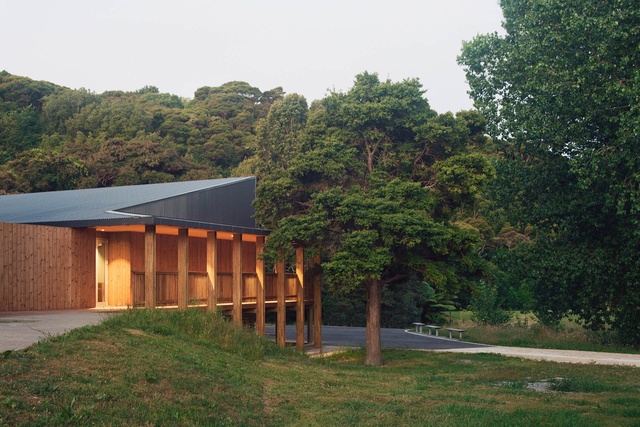
Judges said: “A small-scale intervention within an existing school successfully uses the contours of the site to make it appear bigger than it really is. Simple forms and typologies have been deployed to meet the brief and budget constraints. The pièce de résistance of the scheme is the two-level loggia fronting the playing fields, providing a respite from classroom activity and a sheltered space that can be used in many ways. Interior spaces are beautifully detailed and handled in ways not typically seen in education projects; there’s warmth and delight in the materials and craft in how they’ve been put together.”
Te Rau Karamu Marae by Athfield Architects and Te Kāhui Toi, Massey University in association, Te Whanganui-a-Tara Wellington
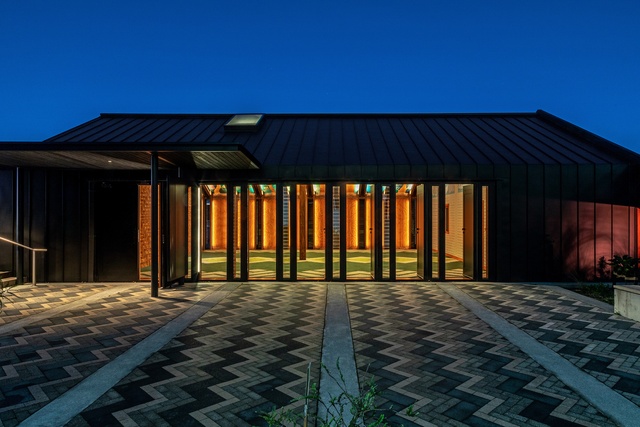
Judges said: “Te Rau Karamu is the cultural heart of the campus and a flexible space that supports education, creativity and conversation. The ātea (courtyard) opens to the surrounding campus, reordering and expressing the access sequence to the new whare wānanga. Recognisable elements derived from traditional forms are given contemporary expression through the use of technology. The interior is rich, warm and superbly detailed. Surfaces alive with story and pattern speak to the close collaboration between architect, client and artist. Te Rau Karamu is an uplifting and engaging cultural outcome, a place of welcome and retreat that fosters education and understanding.”
Christchurch Boy’s High School: Caddick Caldwell Blocks by Athfield Architects, Ōtautahi Christchurch
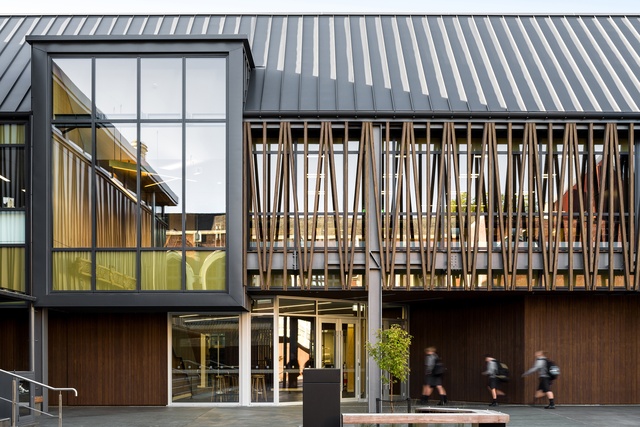
Judges said: “This project successfully demonstrates how to develop an extensive new facility that incorporates modern teaching pedagogy while respecting the heritage of existing buildings. The notion of the quadrangle provides space and time between new and old, as well as a series of outdoor spaces suited for a range of educational uses. The new build is broken into two separate blocks to create a series of outdoor spaces and pathways across the site, as well as moderate the overall scale and composition of the intervention. Traditional teaching spaces and modern learning environments are arranged around breakout spaces to suit the school’s teaching needs. Contemporary materials and colours contrast and complement the heritage buildings.”
Footsteps Pre-School by Parsonson Architects, Te Papa-i-Oea Palmerston North
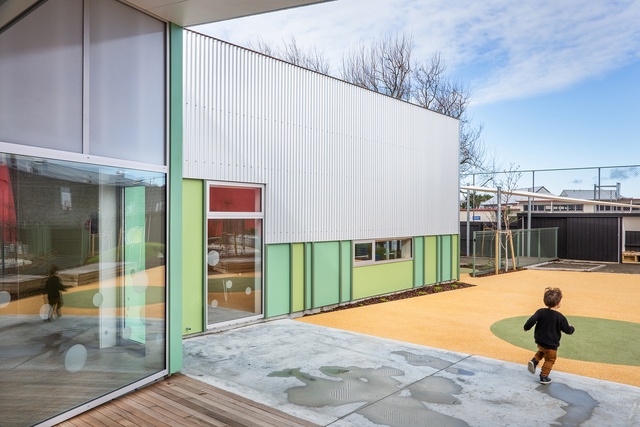
Judges said: “Commitment and care in the design and detail of Footsteps preschool has produced a fresh and gentle building. Clever siting and planning provide positive street activation and playful interaction between children, parents, adjacent primary school students and the public. The use of a cost-effective shed structure, simple materials and colour have been cleverly and inventively handled, so that minimal means have not inhibited architectural quality. Footsteps is a delightful, calm and nurturing learning environment with children’s scale, connection and joy at its heart.”
HERITAGE ARCHITECTURE AWARDS:
Massey University Refectory by Studio Pacific Architecture, Te Papa-i-Oea Palmerston North
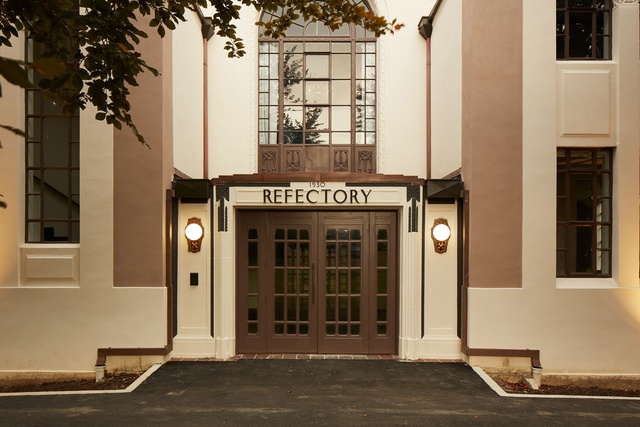
Judges said: “Designed by Roy Lippincott in the 1930s, the refectory has been subject to a series of unforgiving interventions. This carefully managed restoration returns the building to its original configuration, while addressing accessibility and environment. Intelligently located seismic work integrates with the existing fabric and belies the complexity of these interventions. Where possible, existing heritage elements have been meticulously reinstated. Heritage discoveries are sensitively retained and expressed, returning layers of history and use. The architects’ decision to reinstate the building’s configuration and reassemble the central volume in its original condition, using reconstructed plasterwork, lighting and decorative features, brings this heritage building back to life. Their rigorous process contributes greatly to the project’s success.”
INTERIOR ARCHITECTURE AWARDS:
Te Rau Karamu Marae by Athfield Architects and Te Kāhui Toi, Massey University in association, Te Whanganui-a-Tara Wellington
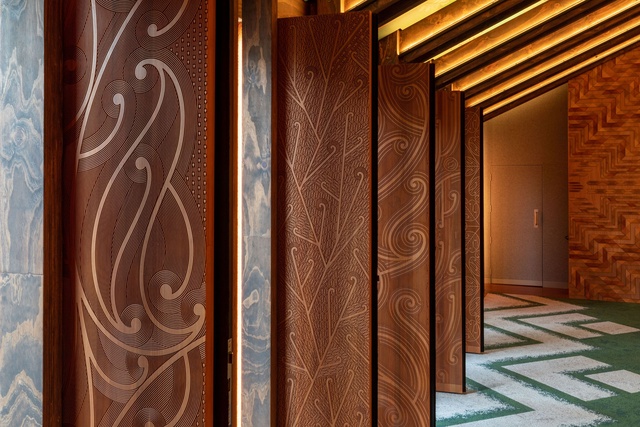
Judges said: “A beautifully resolved interior embodies cultural significance, provides a place for education, storytelling, and a framework to engage with the wider community. There is a seamlessness in the relationship between interior and exterior architecture, developed simultaneously by working in close conjunction with the client and their brief. Light and shade are used in subtle ways to enhance the experience and storytelling of the space, while artworks further strengthen that experience. This project delivers a quality cultural space that surpasses the expected outcome for this building type and site.”
Te Ara Ātea by Warren and Mahoney Architects, Ōtautahi Christchurch
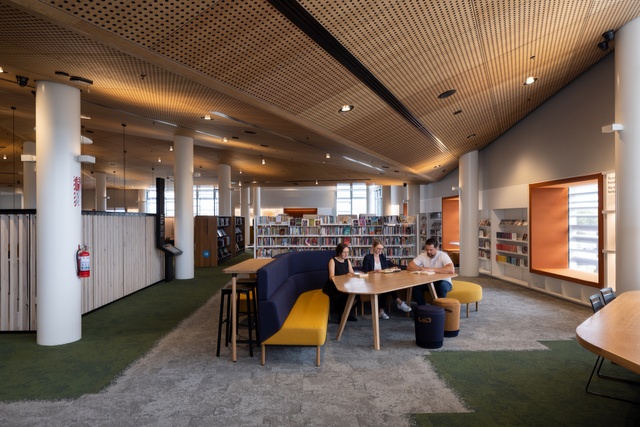
Judges said: “Providing integrated library, community, exhibition and performance spaces, this building is the first civic gesture in the new Rolleston town centre. Within a simple four-cornered plan, movement through the building is curated to provide moments to pause, view and study. The central stair is an ordering element, its crafted timber detailing connecting upper-level workspaces to the act of vertical movement. Expression of the dynamic roof form yields uplifting ceilings, a spacious interior warmed by considered material selection and external screening. Study spaces, workstations and window boxes are artfully inserted, delivering a diversity of public space and experience. The boundary between library, exhibition and performance space remains ambiguous throughout, to the benefit of the community.”
SMALL PROJECT ARCHITECTURE AWARDS:
Nightlight by Coll Architecture, Akaroa
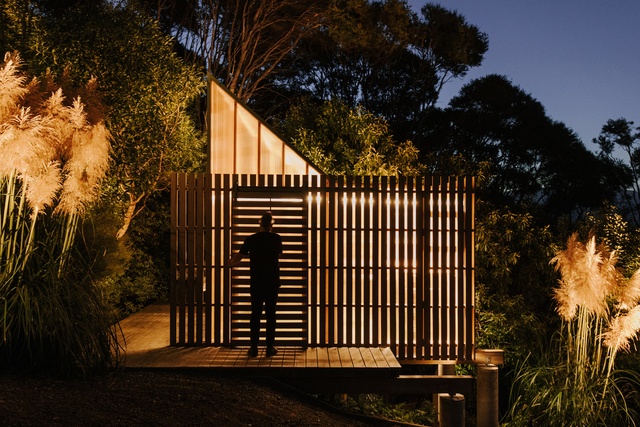
Judges said: “A beautifully crafted, experimental stick in the sand and first step to building a forever home. A basecamp, Nightlight is a shed tightly packed with useful things, including a kitchen, bathroom and workshop. By night it’s a sculptural lantern lending delight to outdoor areas. The project’s success extends beyond the shed to an open fire, bench seats and in-ground hot tub. The assembly of built forms facilitates elemental experiences and connection with the landscape.”
The Cabin by Johnstone Callaghan Architects, Te Tai Ihu Abel Tasman
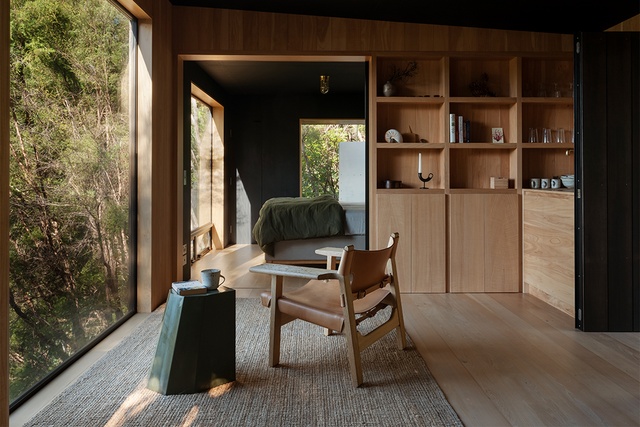
Judges said: “Nestled within a bush-clad inlet, this engaging cabin is almost invisible. The notion of camping is at the heart of a well-worked plan that reduces space to a minimum but adds delight. The warm interior is crafted like a piece of timber furniture; externally, hardwearing materials connect to site. Openings interconnect to adjacent spaces to provide multiple opportunities for inhabitation. The bathroom is deconstructed to an outdoor shower and ‘ablution bunker’ with an arresting view. Movement from the sleeping space through deck areas maintains an intimate connection with the bush, wider environment and water beyond.”
PUBLIC ARCHITECTURE AWARDS:
Kohinga St Albans Community Centre by Christchurch City Council, Ōtautahi Christchurch
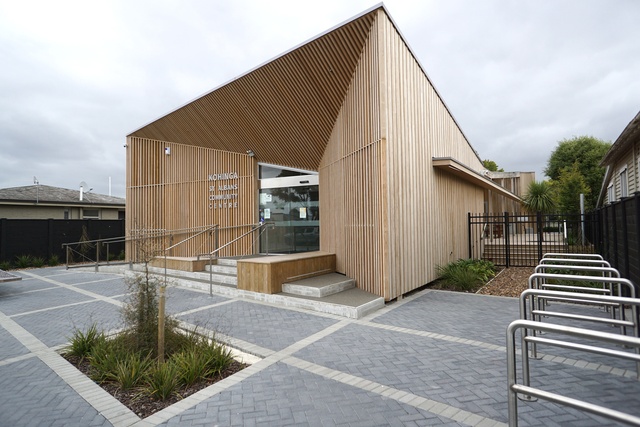
Judges said: “Set back from the street edge, this well-scaled building establishes its community identity with a warm, folded timber façade. Completing an urban masterplan, well-handled gestures reach beyond this site to connect to the streetscape, the community and existing facilities. Paired street entries are connected by a light-filled linear gallery. The north-facing gallery connects multipurpose community spaces at the south with raised timber outdoor space and community gardens beyond. Elevated to address geotechnical and inundation concerns, the lightweight timber structure contributes to a net-zero carbon outcome. The singularity of timber cladding marries crisply detailed interiors and structure, warming human-scaled spaces.”
Auckland City Mission - HomeGround by Stevens Lawson Architects, Tāmaki Makaurau Auckland
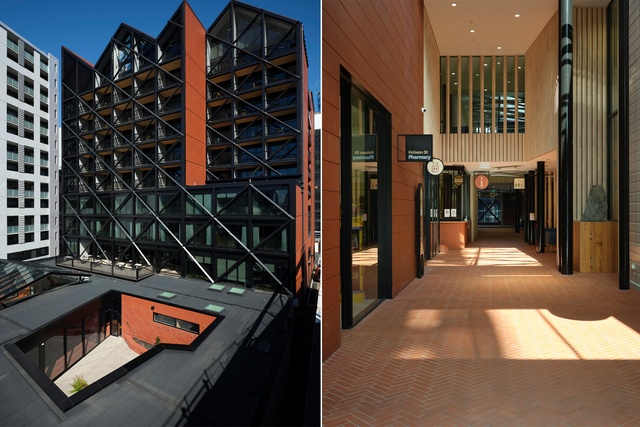
Judges said: “The reinhabitation of Auckland’s City Mission is long awaited. Successfully remaking its part of the city, a connecting lane has been inserted at street level, orienting and organising the complex combination of programmatic services and functions. By investing in its users and providing a dignified response to a complex brief, HomeGround transcends institutional building by promoting meaningful social connection at an urban scale. Beyond its social function, the project completes a sensitive heritage restoration of the former Prince of Wales Tavern and provides well-appointed inner-city housing. Innovation in timber construction and prefabrication is evident, displayed in the recessed balconies and distinctive diagonally woven nine-storey public façade. ”
Te Puna at Auckland Zoo by Stevens Lawson Architects and Jack McKinney Architects in association, Tāmaki Makaurau Auckland
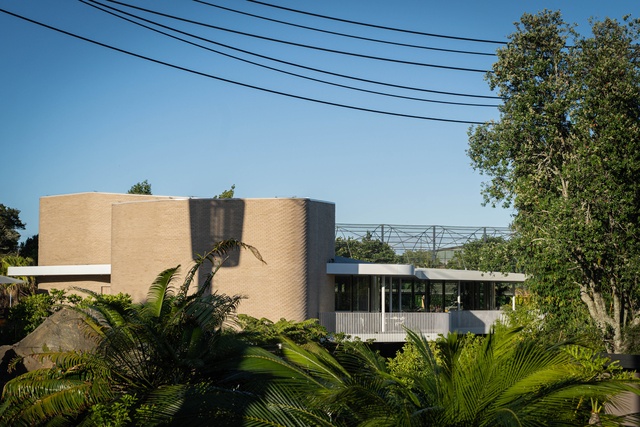
Judges said: “Te Puna is a hub at the heart of Auckland Zoo’s ongoing transformation. This public space provides a seamless observation platform and, intriguingly, perhaps one from which to be observed. A fluid geometry, reminiscent of a coastline, is anchored by two solid brick forms supporting expansive outdoor viewing terraces and a series of glazed interior public areas extending into the zoo landscape. Constructional rigour overlays three structural and material geometries with seamless visual integration. This deceptively simple building cohesively resolves modern zoological needs, animal welfare, acoustics and light spill.”
PLANNING AND URBAN DESIGN AWARDS:
Ōmarukaikuru by Isthmus Group, Te Whanganui-a-Tara Wellington

Judges said: “A small-scale intervention that is part of a larger masterplan, this project provides much needed connection to the water’s edge at the city’s fringe, as well as a safe path for pedestrians and cyclists along a tight site. There are a range of spaces for transiting pedestrians and cyclists, as well as places to pause and connect with the coastal environment. Materials and details balance robustness and delicacy and are fit for purpose as they age gracefully in the severe marine environment.”
Te Wānanga by Isthmus Group, Mana Whenua and Downtown Programme in association, Tāmaki Makaurau Auckland
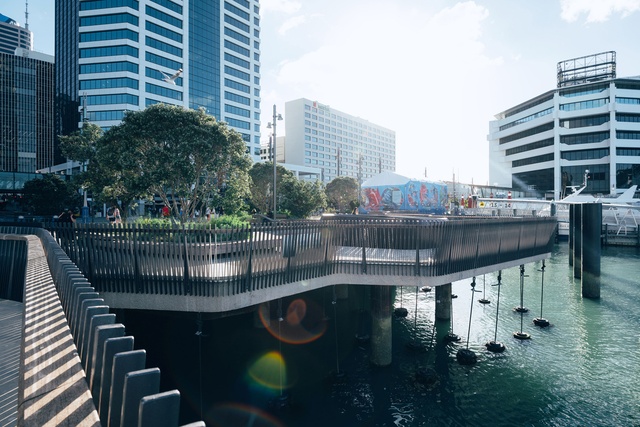
Judges said: “A successful outcome of a complex brief with many stakeholders involved. The result mediates the conversation between the city and its water’s edge, integrating and embedding elements of Māori design in the narrative outcome. The project closes the gap between large-scale urban planning moves and the intricate, small-scale details required for its success. There is joy and delight in the ways the project engages with the water, allowing for the transition of commuters across the site, as well as catering for children at play and the young at heart.”

